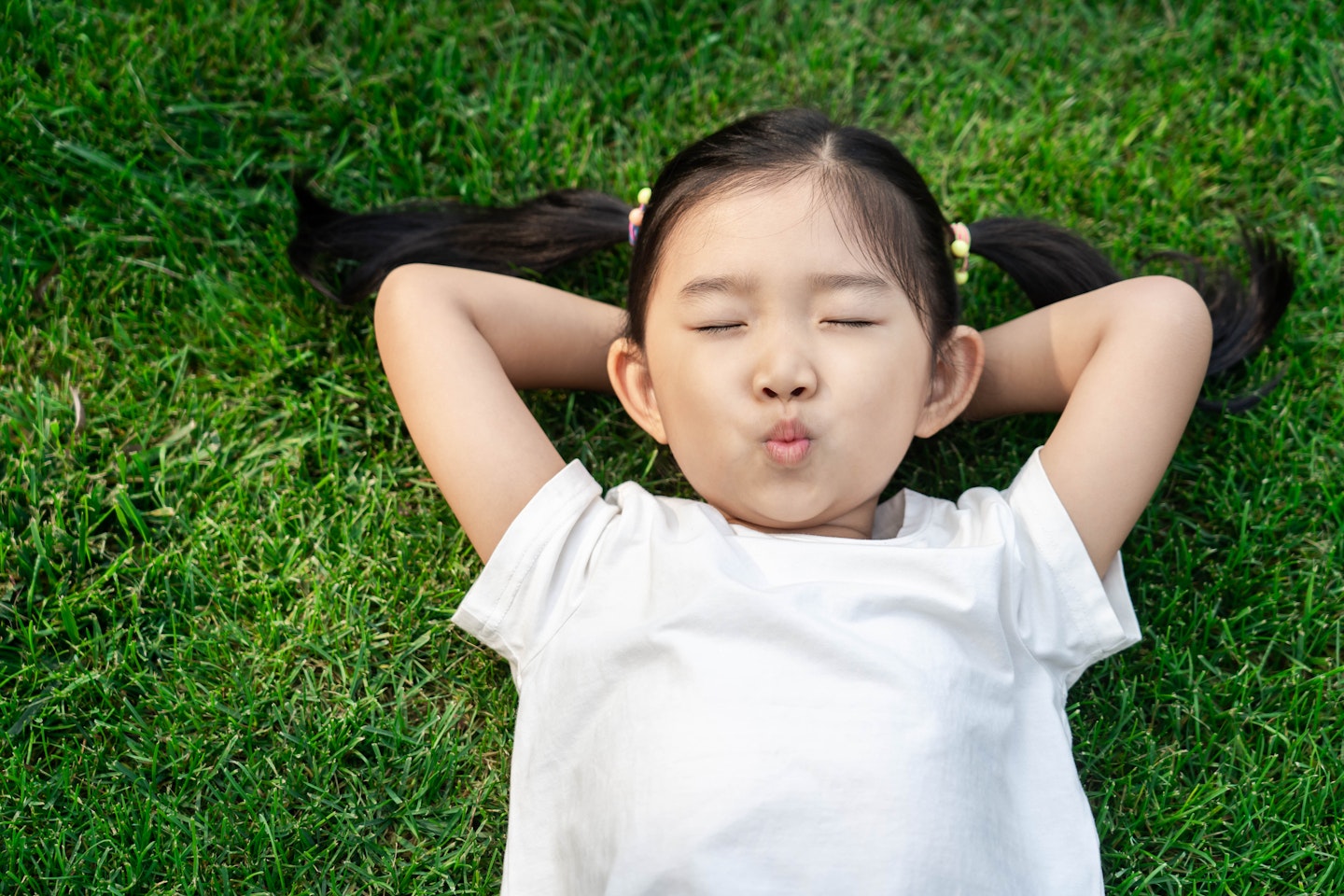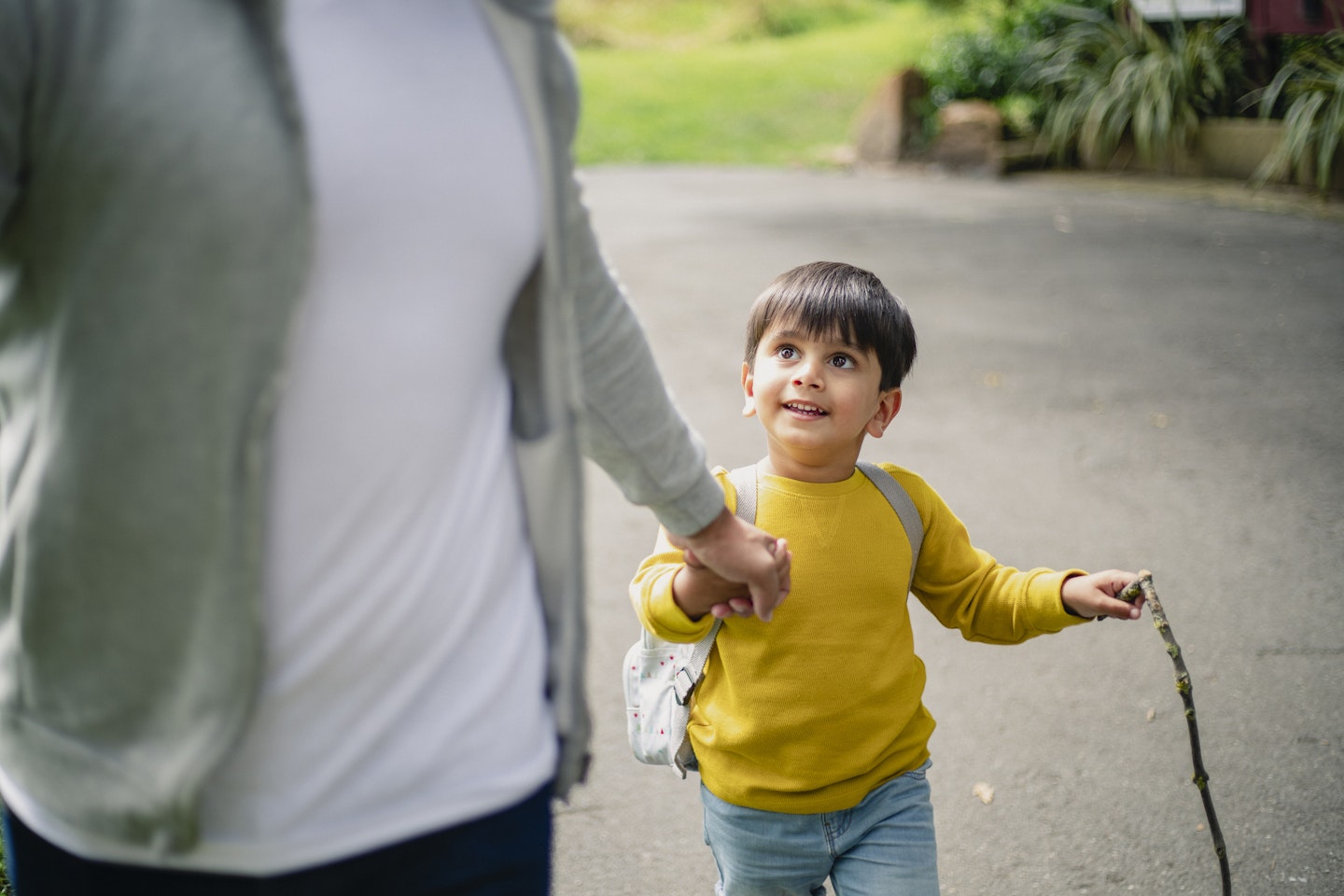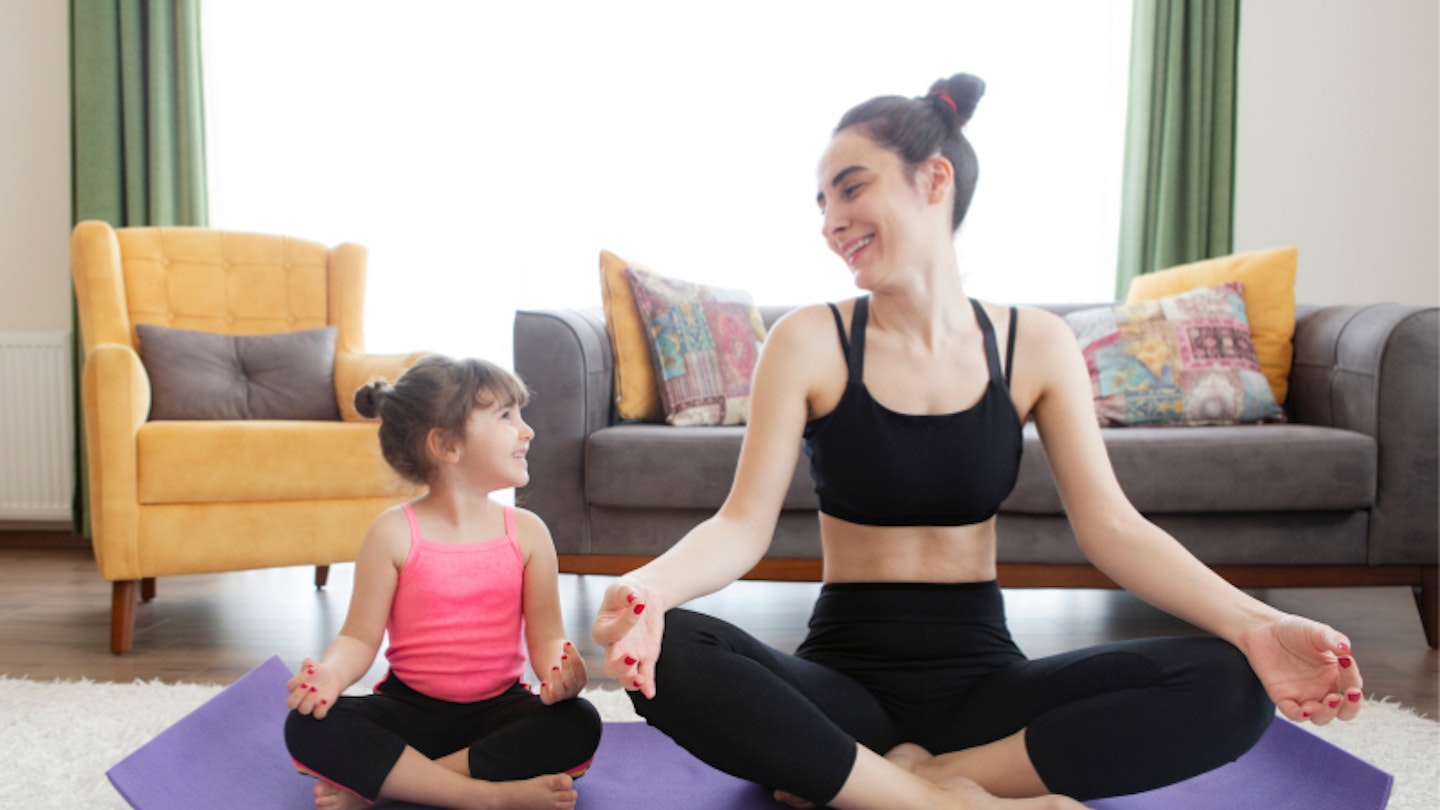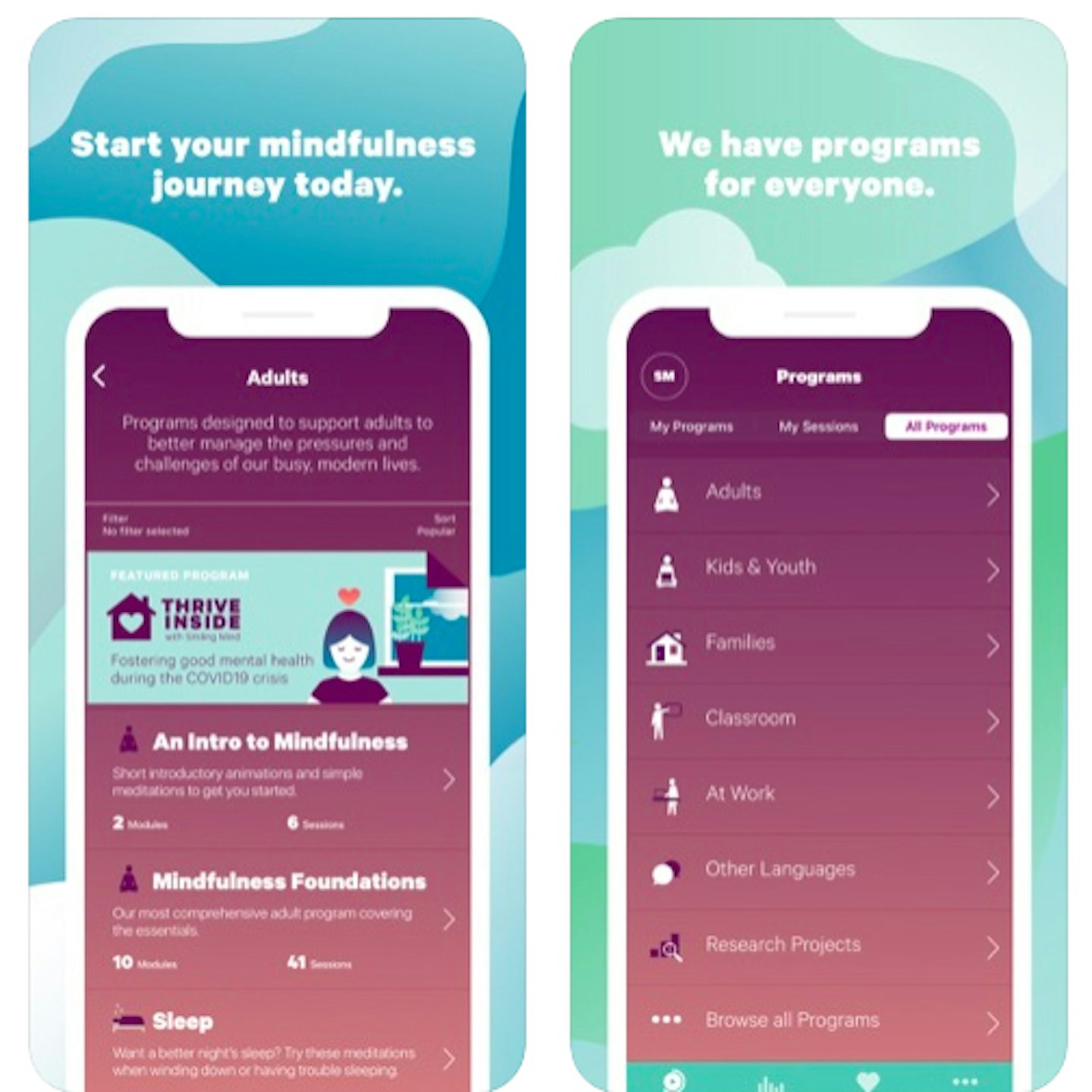You're probably familiar with words like meditation and mindfulness, but did you know that these things can actually be useful tools for your little one? We caught up with Julia Karnacz, Yoga Teacher and founder of Seedlings Wellbeing, an online wellness resource for parents and children, to find out more.
What is meditation?
The practice of meditation, or mindfulness, is the process of stilling the mind, focusing on the breath, and learning to be being fully present in the now; observing thoughts as they pass like clouds.
What age can children start meditation?
Children can begin to practice short meditation from as young as three or four. It often helps if the adults they live with also meditate and children can dip in and out and learn by example. Simply taking time to sit quietly and focus on the breath is a great place to start. Eyes can be open or shut. If the child prefers open, it can help to have something to gaze at softly like a candle or, if you are outside, then softly gazing at a tree in the distance or a flower is a lovely way to begin. Very young children often enjoy having a sand timer to watch, which is also a lovely way to create focus and stillness.
How can I explain meditation to my child?
We usually start with the breath. Noticing the physical sensations (air in and out through the nostrils.) Very young children can lie down, place a soft toy on their tummy, and observe the tummy rise and fall with a deep breath. Once this practice is comfortably established, we talk to children about thoughts being like passing clouds.’ Watching your thoughts as they pass across a calming blue sky’. The idea being that we try not to engage with the thoughts but equally accepting that sometimes our mind will want to and will therefore wander. Keeping the breathing as the focus really helps with this. We reassure children that if their mind wanders, they shouldn’t worry and just bring their thoughts back to the here and now. It may seem like an impossible task but it is actually a lot easier to do than one might expect.

What are the benefits of meditation?
Regular meditation (or mindfulness as it’s otherwise known) is a fantastic way to teach self-regulation giving children tools to observe their breath whenever they need to feel calm. It can be explored further with specific yogic breath (pranayama). There are lots of child-friendly ways to teach breath with different purposes on kids' wellbeing app Seedlings. You can sign up here to receive your free 14-day trial. Regular practice helps to reduce stress and anxiety and also helps with sleep.
How do I help my child get started?
We highly recommend beginning together and trying to fit it into a routine. Creating a space in the same room or spot where you always go is also helpful; ideally, somewhere quiet, where you will not be disturbed. Use cushions and blankets and sit together. Sitting on the floor, or on a cushion on the floor, is ideal but if that doesn’t work for you, a chair is fine. Settle into the space and have any props to hand that you have chosen together and take both hands to the belly to begin.
Guide your child through noticing their breath: to stay focused on the physical sensations, the nostrils, the belly and then moving on to notice the sound of the breath. If your child prefers to have their eyes open and focused on an object, it can help to explain that softly gazing means just gently watching as opposed to staring and straining the eyes. Another important element is to avoid any pressure around the situation. Some days it could be only 30 seconds long, other days a few minutes, some days it may not work at all, but embedding the understanding of the practice will naturally build in time, as will children’s ability to sit still and just breathe.
Meditation tips for toddlers:
Under three’s might not engage fully with meditation (or want to sit still) but seeds for later techniques can be planted…
-
Begin to build in time where you can ‘just be’ together
-
Explore the stillness outside away from any stimulation
-
Lying on the grass and cloud watching
-
Similarly to pre-schoolers, begin to bring attention to the breath by blowing gently on the hands or feet
-
Making it calm but also fun and embracing the awe in nature by observing tiny details in a flower, leaf or pebble
-
Feather blowing (watching the feather move), gentle calm bubble blowing (watching the bubbles float and seeing if you can hear them pop or let them land on you whilst staying still and observing and a soft toy on the tummy noticing the rise and fall with the in and out breath.
-
Going on a mindful walk and embracing each sense one by one - this is more adult-led than with a pre-schooler as different sensations can be drawn attention to
Tip: Baby Yoga is a great way to begin to introduce ‘calm time’ with the under ones too!

Meditation tips for pre-schoolers
-
Find a spot which is quiet and cosy (use cushions and blankets) but where possible make it a sitting activity
-
Begin by noticing the breath
-
Practice together (leading by example)
-
Create a routine/time of day to practice ‘stillness’
-
Avoid any expectations on time or focus- just allow them to fluctuate day by day
-
Use a sand timer or electric candle if preferred
-
Enjoy the stillness (however brief!)
Other more playful ideas can include:
-
Feather blowing (watching the feather move)
-
Gentle calm bubble blowing (watching the bubbles float and seeing if you can hear them pop or let them land on you whilst staying still and observing and a soft toy on the tummy noticing the rise and fall with the in and out breath)
-
Going on a mindful walk (walking meditation) with a challenge not to speak and embracing each sense one by one: sight, sound, smell, taste and touch.
-
It can be fun to collect items on the silent walk and then group them into the senses too.
Even though these are active they grow mindful principles.
Meditation apps for kids
Teach your child the fundamentals of meditation with simple, fun breathing exercises on this well known app.
Although it is yet to launch, Seedlings Wellbeing uses Yoga and Mindfulness with Growth Mindset language in a unique programme to give even very young children the ability to remain calm and centred, no matter what is happening in their world.
Smiling Mind is a free mindfulness meditation app developed by psychologists and educators to help bring balance to life. It features a Kids u0026 Youth programme for 3-18 year olds.
Laugh and learn as your child helps a Sesame Street monster friend calm down and solve everyday challenges. This research-based app helps your child learn Sesame’s “Breathe, Think, Do” strategy for problem-solving.




